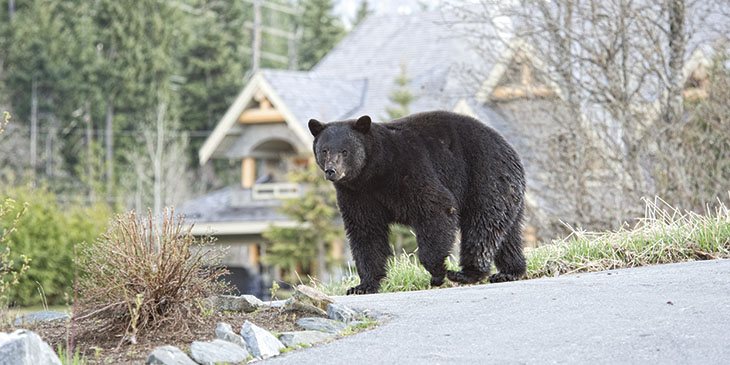How to become a Bear Smart Community
Bear Smart communities are not born, they are made. And in almost every case, it is the commitment and hard work of local residents who begin turning their unsafe, bear-killing communities into examples of increasing co-existence.
Some state and provincial governments also have joined the movement by setting up formalized Bear Smart (or Bear Aware) frameworks that can help guide community efforts. British Columbia may have gone the furthest in developing a program to help eliminate human-bear conflicts in communities across the province. Designed by the Ministry of Environment in partnership with the British Columbia Conservation Foundation and the Union of British Columbia Municipalities, B.C.’s Bear Smart Community Program provides an excellent model with detailed criteria (as noted below) and advice on how to make your community Bear Smart no matter where you live.
We lure bears in with an easy meal and punish them with death for accepting our invitation. – Sylvia Dolson, past ED, Get Bear Smart Society
A brochure outlining the Bear Smart Community Program, as well as a technical background report, were prepared to provide more detailed information and help communities become Bear Smart. (See the B.C. Ministry of Environment’s website for more details.)
The Bear Smart Community Program is based on fulfilling a short list of criteria to be recognized as “Bear Smart.” The responsibility to manage human-bear conflicts rests with everyone and will require participation from the provincial (or state) governments, municipal governments and local citizens to be successful.
- Complete a bear hazard assessment.
- Prepare a human-bear conflict management plan that is designed to address the bear hazards and land-use conflicts identified in the previous step.
- Revise planning and decision-making documents to be consistent with the human-bear conflict management plan.
- Implement an effective education program directed at all sectors of the community.
- Develop and maintain an effective bear-proof municipal solid waste management system.
- Implement and enforce “Bear Smart” bylaws prohibiting the provision of food to bears as a result of intent, neglect or irresponsible management of attractants.
One of the most important initial steps is to form a Bear Stewardship Committee to oversee the process, delivery, and implementation of the Bear Smart Community Program. These decisions must come from a community that takes ownership of the program and in turn motivates community action. It should be comprised of as many of the relevant stakeholders in your community as possible: representatives from the municipal government, interested residents and business leaders, the local waste management company, government agencies responsible for wildlife management, and the local Bear Smart or other environmental advocacy groups. (See the Starting a Bear Smart organization section if there isn’t one in your community.)
This holistic and collaborative approach will help create the public and community support necessary to move from reactive bear management (involving unnecessarily killing bears) to a proactive approach that reduces bear deaths and improves public safety. For more information on forming and running a Bear Stewardship Committee, see Section 5 of B.C.’s Bear Smart Community Program – Background Report.
Funding education programs and the necessary changes to waste management require significant financial resources, which is often one of the most difficult challenges of all. See our fundraising suggestions to help make the process manageable.
Resources:
Still have questions? Click here for A’s to your Q’s .

